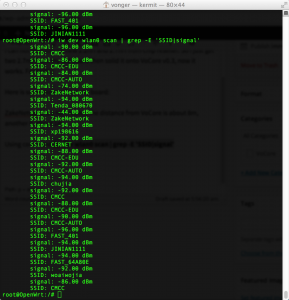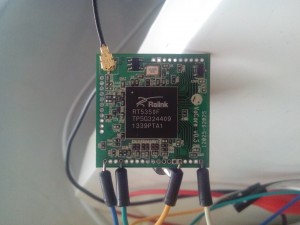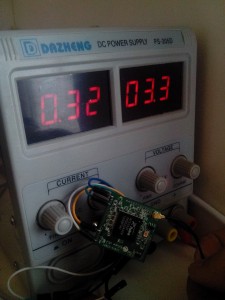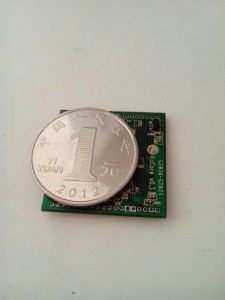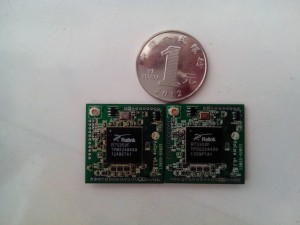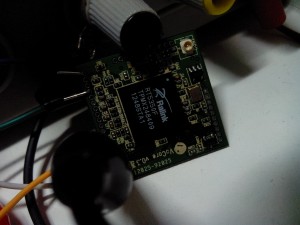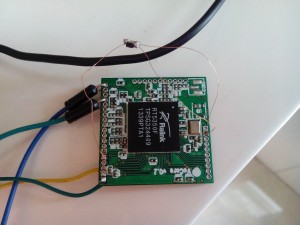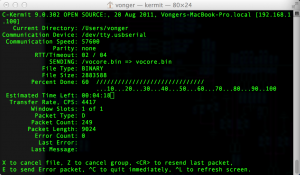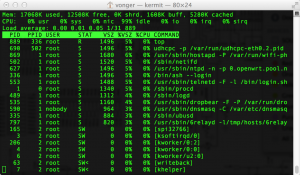Today I got a weird problem.
I soldered five boards but only one of them wifi did work, two of them wifi part did not work, two of them did not work at all.
That failed two are BGA problem. I used too much paste, make it short connected, so that two failed.
But why the other two did not work?
This is ifconfig from bug one(MAC is random):
root@OpenWrt:/# ifconfig br-lan Link encap:Ethernet HWaddr B2:CE:C2:57:76:D8 inet addr:192.168.1.1 Bcast:192.168.1.255 Mask:255.255.255.0 inet6 addr: fd78:8004:63f8::1/60 Scope:Global inet6 addr: fe80::b0ce:c2ff:fe57:76d8/64 Scope:Link UP BROADCAST RUNNING MULTICAST MTU:1500 Metric:1 RX packets:0 errors:0 dropped:0 overruns:0 frame:0 TX packets:8 errors:0 dropped:0 overruns:0 carrier:0 collisions:0 txqueuelen:0 RX bytes:0 (0.0 B) TX bytes:1268 (1.2 KiB)
lo Link encap:Local Loopback inet addr:127.0.0.1 Mask:255.0.0.0 inet6 addr: ::1/128 Scope:Host UP LOOPBACK RUNNING MTU:65536 Metric:1 RX packets:98 errors:0 dropped:0 overruns:0 frame:0 TX packets:98 errors:0 dropped:0 overruns:0 carrier:0 collisions:0 txqueuelen:0 RX bytes:6624 (6.4 KiB) TX bytes:6624 (6.4 KiB)
wlan0 Link encap:Ethernet HWaddr B2:CE:C2:57:76:D8 UP BROADCAST RUNNING MULTICAST MTU:1500 Metric:1 RX packets:0 errors:0 dropped:0 overruns:0 frame:0 TX packets:9 errors:0 dropped:0 overruns:0 carrier:0 collisions:0 txqueuelen:1000 RX bytes:0 (0.0 B) TX bytes:1540 (1.5 KiB)
This is ifconfig from normal one:
root@OpenWrt:/# ifconfig br-lan Link encap:Ethernet HWaddr 00:0A:EB:38:0C:21 inet addr:192.168.1.1 Bcast:192.168.1.255 Mask:255.255.255.0 inet6 addr: fe80::20a:ebff:fe38:c21/64 Scope:Link inet6 addr: fd6a:16a0:a482::1/60 Scope:Global UP BROADCAST RUNNING MULTICAST MTU:1500 Metric:1 RX packets:0 errors:0 dropped:0 overruns:0 frame:0 TX packets:10 errors:0 dropped:0 overruns:0 carrier:0 collisions:0 txqueuelen:0 RX bytes:0 (0.0 B) TX bytes:1464 (1.4 KiB)
eth0 Link encap:Ethernet HWaddr 00:0A:EB:38:0C:21 inet6 addr: fe80::20a:ebff:fe38:c21/64 Scope:Link UP BROADCAST RUNNING MULTICAST MTU:1500 Metric:1 RX packets:0 errors:0 dropped:0 overruns:0 frame:0 TX packets:78 errors:0 dropped:0 overruns:0 carrier:0 collisions:0 txqueuelen:1000 RX bytes:0 (0.0 B) TX bytes:26842 (26.2 KiB) Interrupt:5
eth0.1 Link encap:Ethernet HWaddr 00:0A:EB:38:0C:21 UP BROADCAST RUNNING MULTICAST MTU:1500 Metric:1 RX packets:0 errors:0 dropped:0 overruns:0 frame:0 TX packets:10 errors:0 dropped:0 overruns:0 carrier:0 collisions:0 txqueuelen:0 RX bytes:0 (0.0 B) TX bytes:1464 (1.4 KiB)
eth0.2 Link encap:Ethernet HWaddr 00:0A:EB:38:0C:21 inet6 addr: fe80::20a:ebff:fe38:c21/64 Scope:Link UP BROADCAST RUNNING MULTICAST MTU:1500 Metric:1 RX packets:0 errors:0 dropped:0 overruns:0 frame:0 TX packets:63 errors:0 dropped:0 overruns:0 carrier:0 collisions:0 txqueuelen:0 RX bytes:0 (0.0 B) TX bytes:23595 (23.0 KiB)
lo Link encap:Local Loopback inet addr:127.0.0.1 Mask:255.0.0.0 inet6 addr: ::1/128 Scope:Host UP LOOPBACK RUNNING MTU:65536 Metric:1 RX packets:1394 errors:0 dropped:0 overruns:0 frame:0 TX packets:1394 errors:0 dropped:0 overruns:0 carrier:0 collisions:0 txqueuelen:0 RX bytes:95424 (93.1 KiB) TX bytes:95424 (93.1 KiB)
wlan0 Link encap:Ethernet HWaddr 00:0A:EB:38:0C:21 UP BROADCAST RUNNING MULTICAST MTU:1500 Metric:1 RX packets:0 errors:0 dropped:0 overruns:0 frame:0 TX packets:2 errors:0 dropped:0 overruns:0 carrier:0 collisions:0 txqueuelen:1000 RX bytes:0 (0.0 B) TX bytes:236 (236.0 B)
I think that is solid problem, tomorrow I will get off that BGA chip and then we will know what happened.

